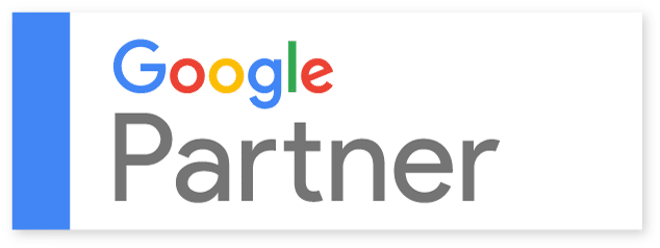9 “SEO Hacks” You Should Never Use

 Let’s face it, computer programmes are getting smarter. Once, every process had to be typed into a command prompt, but now software is now successfully predicting our wants and needs. We live in the world of algorithms and this has changed everything!
Let’s face it, computer programmes are getting smarter. Once, every process had to be typed into a command prompt, but now software is now successfully predicting our wants and needs. We live in the world of algorithms and this has changed everything!
From high-end business analytics to smart home devices, the digital world is getting smarter every day and you’d better believe the search engines are at the forefront of this development.
Search engines have grown an incredible amount in the last two decades from simple keyword matching algorithms to complex self-regulating online environments.
One of the most important things to remember when optimising your online content for search engines (SEO) is that what worked ten, five, or even two years ago is not what will work today.
With each mini-generation of search engine development, people have discovered ‘tricks’ to boost their page ranking and visibility and as these methods got abused by over-zealous black-hat tactics, the developers put a stop to it.
Every time some SEO tactic is misused, the search engine algorithms are updated to not just put a stop to it but actively punish websites that use these ‘spammy’ tactics. That’s why it’s important to stay up-to-date on your SEO do’s and don’ts.
To help, here’s a quick list of the top “SEO Hacks” from the past that have since been banned and should not be used now or ever!
BLOG: 9 'SEO Hacks' You Should Never Use | #JSBTalksDigital #SEO #SEM Click To Tweet
1) Keyword Stuffing
Keyword stuffing is almost a natural developmental stage of companies trying to learn and implement their own SEO. The idea is that the more of certain magnet keywords you have, the more ‘relevant’ your pages will be to user searches.
However, the algorithm can also count and knows approximately how many time’s it’s reasonable to use the same two or three words in a single article.
Because the search engine algorithm is configured to lead users to quality content, keyword stuffing is quickly identified as low-quality content and sent to the back of the page rankings.
For this reason, even if you’re not keyword stuffing on purpose, double-check all your content to make sure robotic thinking didn’t repeat a particular word or phrase too many times.
2) Invisible Text
Invisible text is one of the early SEO tactics that seemed like such a good idea. In theory, you can show the crawlers one set of information full of keywords and informative data about the where and when of your service while showing your visitors a pretty, user experience optimized page that may not have the same keywords in it but should ideally contain the desired information.
A common way to do this was using text that either is covered over by other content or is the same colour as the background, so that only the crawlers can see it.
However, this tactic was severely misused to feed the crawlers a bunch of high-demand keywords then fill the UI with spammy adds and non-useful content so the algorithm changed.
Now, it’s best if the crawlers see exactly what your users see with no hidden keywords or information.
3) Paying for Links
Paying for links in SEO is like buying social media followers, it’s fake and cheesy but a lot of people did it back in the early SEO days and a few still seem to think it’s a good idea.
Paid links can come in many shapes and sizes and the most common form is to buy yourself a spot on a link-list which is a long webpage full of links to site of people who paid.
This is a very cheap way to get back-links to your site but the algorithm can now identify these lists and other similar tactics and will demerit all participants as scammers.
Other known forms of paying for links include buying a spot on someone else’s site, Fiverr or forum links, paid link networks where everyone posts each other’s links (link rings), and private blog networks that do the same.
The algorithm can simply track the link circle and penalise everyone.
4) Too Many Outgoing Links
In fact, links to your site aren’t the only way to go wrong. Off-page SEO is a measure of how many (useful) links to other sites are included in your content.
The more connected you are to an informative and helpful internet community of experts, the better. However, not just any outgoing link will do, it actually has to be content-relevant and useful to whatever you were writing about.
Yes, the search engine algorithms know and are configured to keep track of the usefulness of your links
However, even if every link is helpful, be careful about linking too much. Once again, a few too many someone’s tried to play pure numbers games and blog posts were written with over 20 individual (and fairly pointless) links in an attempt to game the off-page SEO bonuses.
Keep your links to about one or two per two-hundred words so you don’t appear to be link-stuffing.
#SEO Tip: Keep your links to about one or two per two-hundred words so you don't appear to be link-stuffing. #JSBTalksDigital Click To Tweet
5) Duplicate Content
Have you ever tried to investigate a topic or news story only to discover that several of the links are literal copy-pastes of each other? This is always a spooky experience and one that the SEO algorithms are trying hard to cut down on.
Duplicating content has been a long-standing tactic to create content and ‘relevance’ without actually doing any work, often piggybacking off the work of a competitor instead.
That said, duplicate content, even between your own web pages, is now a risk to your page ranking and SEO reputation so be very careful and write original content for every page.
6) Low-Quality Guest Posts
Guest posting is one of the most friendly and productive forms of SEO boosting in the business, but lazy black-hat minded ‘optimisers’ have managed to foul this one up, too with careless and low-quality posts.
The idea of guest posting for SEO is that you write something useful and entertaining about your expertise geared toward your friend’s audience.
You can then helpfully link readers to your blog in a ‘find me here’ sort of exchange and later, your friend can guest post and share their link with your readers.
This is a great system when it’s done right, but the penalty algorithm is on the look-out for scammy guest posting tactics, now.
Examples include topics that aren’t relevant to the theme of the website, low-quality writing, signs of other SEO manipulation in the content, very short posts, and copy-pasted content.
7) Too Many Immediately Visible Ads
We know ads are the bread and butter of many sites, especially if your primary service is content.
However, where you put those ads and how much of the screen they take up matters a lot to the SEO algorithms.
You can have them along the sides, sitting helpfully at the bottom of the page below the content, and even a few up at the top but be very careful about filling up your ‘above the fold’ real estate.
‘Above the fold’ means the area of the screen you can see after loading and without scrolling. If this area is too full of ad, you will be penalized for having a ‘spammy’ layout.
8) Abundant Anchor Text
Anchor text is by far one of the coolest ways to link to helpful related content.
It allows you to skip the fully printed URLs and ‘click here’ messages by using the old Wikipedia trick and simply putting the link right on the relevant word, just in case the reader wants to learn more about that.
This is also the most common way to do external links to other sites and, in general, anchor text is still okay.
However, some people use anchored text like keyword stuffing and many combine the two, stuffing with keywords and linking every time a keyword appears.
This, once again, is a spammy way to go about things and tends to really irritate readers. Always looking to please the search engine users, Google and other search engine algorithms are now distributing penalties for too many anchor-text instances and for anchor text in place of content.
9) Multiple Micro-Sites
Our final warning is against multiple sites with very similar names and content. While this may have been a good idea at first for A/B testing, if you have several sites that all funnel to the same content, SEO algorithms are no longer happy with this.
Not to mention the fact that each of your sites are only getting a fraction of the benefit from all your efforts. Consider consolidating to rectify the situation.
There are a lot of different sources of information for how to optimize your search engine visibility, watch out for older and misinformed guides that suggest you do things the algorithms no longer allow.
For more helpful SEO advice as part of your digital marketing strategy, contact us today!
There are a lot of different sources of information for how to optimize your search engine visibility, watch out for older and misinformed guides that suggest you do things the algorithms no longer allow. | #JSBTalksDigital #SEO Click To Tweet





